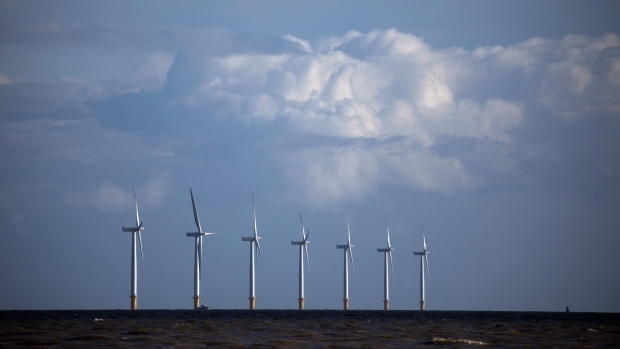Apr 25, 2023
EU Gambit to Swap Russian Gas for Offshore Wind Is Falling Short
, Bloomberg News

(Bloomberg) -- European efforts to rapidly scale-up offshore wind farms to help cut dependence on Russian natural gas and reduce planet-warming emissions are falling short as developers struggle to deliver projects.
Significant changes in how governments offer new developments as well as incentives for hydrogen production are crucial to get Europe on track to reach its renewable power goals, which are key to the EU’s climate and energy security plans, according to Rasmus Errboe, head of Europe for Orsted A/S, the largest offshore wind farm developer in the region.
The prognosis comes after European leaders gathered in Belgium Monday to promote the promise of the North Sea in Europe’s low-carbon future. Nearly a year ago, Germany, Belgium, the Netherlands and Denmark issued a declaration to speed offshore wind construction to reach 65 gigawatts of capacity by 2030, about five times the amount deployed today. The UK plans an additional 50 gigawatts of wind farms off its coast.
“One of my worries is that we don’t move forward fast enough,” Errboe said in an interview. “We will miss our 2030 targets.”
The nations are currently far behind. Analysts at BloombergNEF forecast that the five countries will reach about 88 gigawatts combined by the end of the decade, about three-quarters of their stated goals.
And despite the political push to move faster, spending has actually slowed. Last year, there wasn’t a single final investment decision in a new offshore wind farm, according to industry group WindEurope.
This year has seen some improvement, with companies already making new investments in offshore wind. But just to reach headline targets will likely require every project to go ahead on schedule, if not before. And there are plenty of projects with uncertain outcomes.
Soaring Costs
That includes Orsted’s Hornsea 3 wind farm planned off Britain’s east coast. The Danish company has warned that the £8 billion ($10 billion) project is at risk of not going ahead because costs have soared, far exceeding the price it agreed to sell the power generated under a government-backed contract.
Along with the UK project, Orsted is trying to reach a final investment decision on 2.5 gigawatts of offshore wind projects in Poland known as Baltica 2 and 3 that the company is developing with PGE Polska Grupa Energetyczna SA.
“We are fully committed to moving both projects forward,” Errboe said. “We are working night and day.”
In the future, Errboe said he’d like the option to opt out of government-backed power contracts in favor of power purchase agreements with private companies. Such agreements helped competitors Engie and EDP invest in a £2 billion wind farm off the British coast last week.
(Updates with chart after fifth paragraph.)
©2023 Bloomberg L.P.


